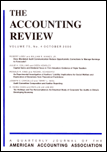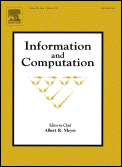A citation index is a kind of bibliographic index, an index of citations between publications, allowing the user to easily establish which later documents cite which earlier documents. A form of citation index is first found in 12th-century Hebrew religious literature. Legal citation indexes are found in the 18th century and were made popular by citators such as Shepard's Citations (1873). In 1961, Eugene Garfield's Institute for Scientific Information (ISI) introduced the first citation index for papers published in academic journals, first the Science Citation Index (SCI), and later the Social Sciences Citation Index (SSCI) and the Arts and Humanities Citation Index (AHCI). American Chemical Society converted its printed Chemical Abstract Service into internet-accessible SciFinder in 2008. The first automated citation indexing was done by CiteSeer in 1997 and was patented. Other sources for such data include Google Scholar, Microsoft Academic, Elsevier's Scopus, and the National Institutes of Health's iCite.
The impact factor (IF) or journal impact factor (JIF) of an academic journal is a scientometric index calculated by Clarivate that reflects the yearly mean number of citations of articles published in the last two years in a given journal, as indexed by Clarivate's Web of Science.
Scientometrics is the field of study which concerns itself with measuring and analysing scholarly literature. Scientometrics is a sub-field of informetrics. Major research issues include the measurement of the impact of research papers and academic journals, the understanding of scientific citations, and the use of such measurements in policy and management contexts. In practice there is a significant overlap between scientometrics and other scientific fields such as information systems, information science, science of science policy, sociology of science, and metascience. Critics have argued that over-reliance on scientometrics has created a system of perverse incentives, producing a publish or perish environment that leads to low-quality research.

Google Scholar is a freely accessible web search engine that indexes the full text or metadata of scholarly literature across an array of publishing formats and disciplines. Released in beta in November 2004, the Google Scholar index includes peer-reviewed online academic journals and books, conference papers, theses and dissertations, preprints, abstracts, technical reports, and other scholarly literature, including court opinions and patents.
The h-index is an author-level metric that measures both the productivity and citation impact of the publications, initially used for an individual scientist or scholar. The h-index correlates with obvious success indicators such as winning the Nobel Prize, being accepted for research fellowships and holding positions at top universities. The index is based on the set of the scientist's most cited papers and the number of citations that they have received in other publications. The index has more recently been applied to the productivity and impact of a scholarly journal as well as a group of scientists, such as a department or university or country. The index was suggested in 2005 by Jorge E. Hirsch, a physicist at UC San Diego, as a tool for determining theoretical physicists' relative quality and is sometimes called the Hirsch index or Hirsch number.
Journal ranking is widely used in academic circles in the evaluation of an academic journal's impact and quality. Journal rankings are intended to reflect the place of a journal within its field, the relative difficulty of being published in that journal, and the prestige associated with it. They have been introduced as official research evaluation tools in several countries.

The Accounting Review is a bimonthly peer-reviewed academic journal published by the American Accounting Association (AAA) that covers accounting with a scope encompassing any accounting-related subject and any research methodology. The Accounting Review is one of the oldest accounting journals, and recent studies considered it to be one of the leading academic journals in accounting.

The Journal of Investing is a quarterly peer-reviewed academic journal that covers research on investment management, asset allocation, performance measurement, benchmarking, mutual funds, investing strategies such as 130/30 funds, global allocation, and practical investment ideas and portfolio strategies for the institutional buy-side such as pension funds. It is published by Portfolio Management Research and the editor-in-chief is Brian R. Bruce.
Excellence in Research for Australia (ERA) is Australia’s national research evaluation framework, developed and administered by the Australian Research Council (ARC). The first full round of ERA occurred in 2010, and subsequent rounds followed in 2012, 2015 and 2018. A round was scheduled for 2023, but in September 2022 the ARC announced that this would be postponed as they were transitioning the ERA process to a more robust and data driven model.
Algorithmica is a monthly peer-reviewed scientific journal focusing on research and the application of computer science algorithms. The journal was established in 1986 and is published by Springer Science+Business Media. The editor in chief is Mohammad Hajiaghayi. Subject coverage includes sorting, searching, data structures, computational geometry, and linear programming, VLSI, distributed computing, parallel processing, computer aided design, robotics, graphics, data base design, and software tools.

Information and Computation is a closed-access computer science journal published by Elsevier. The journal was founded in 1957 under its former name Information and Control and given its current title in 1987. As of July 2022, the current editor-in-chief is David Peleg. The journal publishes 12 issues a year.
QS World University Rankings is an annual publication of university rankings by Quacquarelli Symonds (QS).
The Financial Analysts Journal is a quarterly peer-reviewed academic journal covering investment management, published by Routledge on behalf of the CFA Institute. It was established in 1945 and as of August 2022, the editor-in-chief is William N. Goetzmann.
Arthur Bakker is a Dutch mathematics education researcher and associate professor at the Freudenthal Institute, Utrecht University, Netherlands. He is Fellow at the University of Bremen.
Marta Civil is an American mathematics educator. Her research involves understanding the cultural background of minority schoolchildren, particularly Hispanic and Latina/o students in the Southwestern United States, and using that understanding to promote parent engagement and focus mathematics teaching on students' individual strengths. She is the Roy F. Graesser Endowed Professor at the University of Arizona, where she holds appointments in the department of mathematics, the department of mathematics education, and the department of teaching, learning, and sociocultural studies.
Mary Kay Stein is an American mathematics educator who works as a professor of learning sciences and policy and as the associate director and former director of the Learning Research and Development Center at the University of Pittsburgh.
Katherine Taylor Halvorsen is an American statistician and statistics educator whose research topics have included statistical significance for contingency tables, and the conditional logistic regression method for analysis of multiple risk factors in case–control studies. She was co-author of four editions of Mathematics Education in the United States, a quadrennial review publication of the National Council of Teachers of Mathematics, and serves on the Mathematical Sciences Academic Advisory Committee of the College Board.
Douglas H. Clements is an American scholar in the field of early mathematics education. Previously a preschool and kindergarten teacher, his research centers on the learning and teaching of early mathematics, computer applications for mathematics teaching, and scaling up successful educational interventions. Clements has contributed to the writing of educational standards including the Common Core State Standards, the NCTM's Principles and Standards for School Mathematics and the NCTM's 2006 Curriculum Focal Points for Prekindergarten through Grade 8 Mathematics.
Susan Baker Empson is an American scholar of mathematics education whose work includes longitudinal studies of children's mathematical development, the use of Cognitively Guided Instruction in mathematics education, analyses of childhood understanding of the concept of fractions, and research on the professional development of mathematics educators. She is a professor emerita in the Department of Learning, Teaching, and Curriculum at the University of Missouri, where she held the Richard Miller endowed chair of mathematics education.




